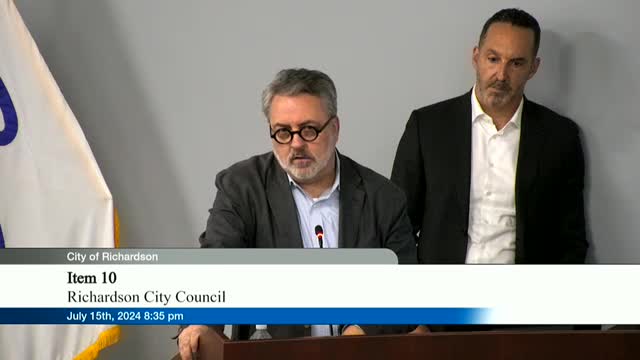Rising rents spark debate over student housing options
July 15, 2024 | Richardson, Dallas County, Texas

This article was created by AI summarizing key points discussed. AI makes mistakes, so for full details and context, please refer to the video of the full meeting. Please report any errors so we can fix them. Report an error »

In a recent government meeting, discussions centered around the rising demand for student housing near the University of Texas at Dallas (UTD) and the implications for rental prices in the area. A representative highlighted that the majority of new student housing projects typically consist of 60 to 65% four-bedroom units, which allows for increased density and lower rent per bedroom. This trend is expected to continue as developers aim to remain competitive in a market where rental prices have surged by approximately 10% over the past year, largely attributed to inflation and heightened demand.
The representative emphasized that their proposed rental rates would align closely with existing options, such as those at Northside, a nearby apartment complex, to ensure financial viability. They noted that without competitive pricing, financing for new developments would be challenging, as potential renters would not be inclined to pay significantly higher rates for new constructions.
Council member Samshul, who has a background in engineering and business, expressed concerns about construction sequencing and the necessity of having a single developer oversee the entire project. He argued that having one developer would streamline the process and ensure that essential utilities are installed efficiently, rather than leaving it to multiple phases that could complicate logistics.
The council member also touched on the broader issue of affordable housing, acknowledging the challenges posed by rising rents while advocating for a free market approach. He stressed the importance of providing students with more housing options, as the current market lacks sufficient alternatives, limiting their choices.
Overall, the meeting underscored the complexities of developing student housing in a competitive market, balancing the need for affordability with the realities of construction and demand.
The representative emphasized that their proposed rental rates would align closely with existing options, such as those at Northside, a nearby apartment complex, to ensure financial viability. They noted that without competitive pricing, financing for new developments would be challenging, as potential renters would not be inclined to pay significantly higher rates for new constructions.
Council member Samshul, who has a background in engineering and business, expressed concerns about construction sequencing and the necessity of having a single developer oversee the entire project. He argued that having one developer would streamline the process and ensure that essential utilities are installed efficiently, rather than leaving it to multiple phases that could complicate logistics.
The council member also touched on the broader issue of affordable housing, acknowledging the challenges posed by rising rents while advocating for a free market approach. He stressed the importance of providing students with more housing options, as the current market lacks sufficient alternatives, limiting their choices.
Overall, the meeting underscored the complexities of developing student housing in a competitive market, balancing the need for affordability with the realities of construction and demand.
View full meeting
This article is based on a recent meeting—watch the full video and explore the complete transcript for deeper insights into the discussion.
View full meeting
